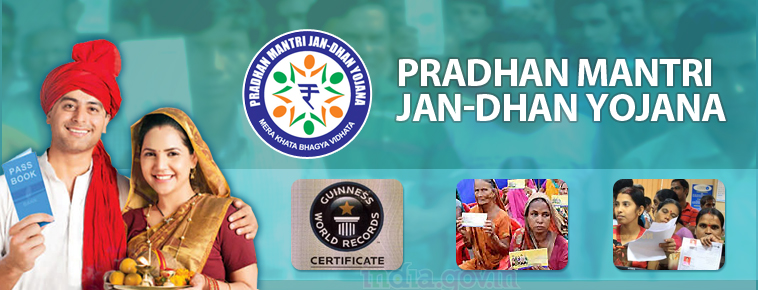Launched on August 28, 2014, by the Indian government under Prime Minister Narendra Modi, the Pradhan Mantri Jan Dhan Yojana (PMJDY) is an ambitious initiative aimed at financial inclusion for every Indian citizen. With a focus on providing banking services to the underserved and unbanked population, this program has played a key role in empowering millions of people by connecting them to the formal financial system.
Understanding Pradhan Mantri Jan Dhan Yojana (PMJDY)
What Is PMJDY?
Pradhan Mantri Jan Dhan Yojana (PMJDY) is a flagship program designed to offer basic financial services to the unbanked and underprivileged segments of Indian society. Its key focus is to provide every household with access to a bank account, ensuring financial inclusion for all, especially in rural and remote areas.
The Vision and Mission Behind PMJDY
The core vision of PMJDY is to create a system where every Indian has access to a bank account, financial literacy, and various financial services such as insurance, savings, and loans. This empowers individuals to manage their finances, participate in the economy, and benefit from government schemes and subsidies.
Key Features of the Pradhan Mantri Jan Dhan Yojana
Zero Balance Accounts
A standout feature of the scheme is the option to open a zero balance account. This eliminates any barriers for people who cannot afford to maintain a minimum balance in their accounts, making banking services more accessible to low-income families.
Overdraft Facility & RuPay Debit Cards
Account holders are also eligible for an overdraft facility of up to ₹10,000, granted based on individual creditworthiness. In addition, the program provides beneficiaries with RuPay debit cards, which can be used for online purchases, ATM withdrawals, and digital transactions.
Insurance Coverage for Account Holders
Each account holder is entitled to life insurance and accidental death coverage. This feature provides a safety net for individuals who otherwise lack access to such protection.
Direct Benefit Transfers (DBT)
One of the key integrations of PMJDY is its linkage to the Direct Benefit Transfer (DBT) system. This system allows the government to directly transfer subsidies, payments, and welfare benefits to the bank accounts of beneficiaries, thus ensuring greater transparency and timely delivery.
Impact of Pradhan Mantri Jan Dhan Yojana on India’s Economy
Increase in Banking Penetration
PMJDY has successfully extended the reach of banking services to millions who previously did not have access. Over 40 crore accounts have been opened under this initiative, significantly boosting the number of bank account holders in India.
Bridging the Gap in Financial Services
Before PMJDY, many individuals, especially in rural areas, were excluded from financial services such as credit, savings accounts, and insurance. PMJDY has played a pivotal role in bridging this gap, giving rural populations access to the same financial services as their urban counterparts.
Contributing to the Formal Economy
By encouraging more people to use formal banking channels, PMJDY has helped in formalizing India’s largely cash-driven economy. This has enabled better tracking of financial transactions and has paved the way for a transparent financial system.
How PMJDY Benefits the Public
Enhancing Financial Inclusion
PMJDY has made it possible for even those in the most remote areas to have access to banking services, savings accounts, and other essential financial tools. This has brought a sense of security to millions of people who previously relied on informal channels for financial management.
Access to Government Schemes
Through PMJDY, citizens can directly access government welfare programs such as the LPG subsidy, MNREGA payments, and other social security benefits. This ensures that beneficiaries receive their entitled subsidies directly in their bank accounts, removing intermediaries and delays.
Fostering Digital Transactions
The introduction of RuPay debit cards and mobile banking services has made transactions easier and more secure. This shift towards digital payments has been especially beneficial for people in rural areas, enabling them to make payments and transfer money conveniently.
Challenges Faced by Pradhan Mantri Jan Dhan Yojana
Low Financial Literacy in Rural Areas
Despite the success of the scheme, financial literacy remains a major challenge, especially in rural regions. Many people still struggle to understand how to use their bank accounts, make digital payments, or access various financial products.
Limited Access to Banking Infrastructure
Even though PMJDY has been a major success in terms of account openings, challenges persist in providing adequate banking infrastructure. Many rural areas still face issues related to internet connectivity, poor mobile network coverage, and limited availability of bank branches.
Sustainability and Cost Concerns
The sustainability of PMJDY remains a concern. As the program expands, banking costs related to account maintenance, insurance coverage, and the disbursement of subsidies will continue to grow. Collaborations between government bodies and financial institutions will be essential to ensuring the long-term success of the scheme.
What’s Next for Pradhan Mantri Jan Dhan Yojana?
Extending Coverage to Remote Areas
The future of PMJDY hinges on extending banking services to remote villages and other underserved regions. By improving accessibility to financial services in these areas, PMJDY will continue to drive financial inclusion across the country.
Emphasizing Digital Banking and Financial Education
As digital banking grows, the need for financial education becomes increasingly crucial. The government should continue investing in financial literacy programs to ensure that people understand how to effectively manage their finances and utilize digital banking services safely.
Better Integration with Other Government Schemes
PMJDY’s integration with other government programs like Pradhan Mantri Kisan Yojana (PMKSY) and National Social Assistance Program (NSAP) will improve its effectiveness. By allowing citizens to receive a variety of government benefits through their PMJDY accounts, the program can further streamline welfare delivery.
Conclusion
The Pradhan Mantri Jan Dhan Yojana has made significant strides in financial inclusion, giving millions of Indians the opportunity to participate in the formal economy. By providing basic banking services, insurance coverage, and access to government subsidies, the scheme has improved the financial well-being of people across the nation. While challenges remain, especially in rural areas, the future of PMJDY looks promising, with continued focus on digital banking, financial education, and infrastructure improvements.
